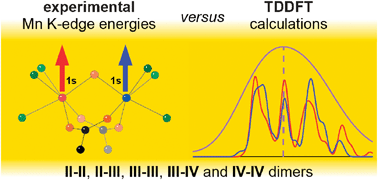The effect of Mn oxidation state on metal core electron excitations in manganese dimers: a time-dependent density functional investigation†
Abstract
Time-dependent density functional theory (TDDFT) calculations have been performed on a series of manganese dimers with averaged metal oxidation states of 2.0, 2.5, 3.0, 3.5 and 4.0. The excitation energies and oscillator strengths of transitions within the Mn K-core edges have been determined. The theoretical edge energies reproduce the experimental correlation between the relative position of the Mn K-edge and the averaged Mn


 Please wait while we load your content...
Please wait while we load your content...